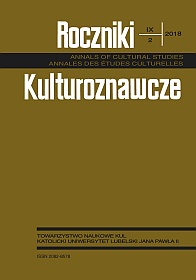Unbalanced Natural Increase in Europe, Africa, and in the Near East
Abstract
The aim of this article is to present the problem of unbalanced natural increase in Europe, Africa, and the Near East. The first part presents demographical trends occurring in the world in the twentieth century and a comparative analysis of the factors determining the natural increase. In the second part, it was carried out an analysis of demographic changes in sub-Saharan Africa and factors affecting the value of the birth (fertility) rate, which is the highest in the world on this subcontinent. The third part presents problems related to the internal unbalanced natural increase in the MENA region. In particular, it is an attempt to answer the question what factors influence the fact that, although the region is characterized by a far-reaching cultural-religious-civilization community, there are large differences between countries in term of natural increase and birth (fertility) rate, and what the effects may be. The last paragraph presents perspectives for further population growth in Sub-Saharan Africa and the MENA region, as well as the possible consequences of these trends, in particular concerning migration, destabilization, and new conflicts.
References
Banister, Judith. „A Brief History of China's Population”. W Dudley L. Poston i David Yaukey (eds.). The Population of Modern China. (The Springer Series on Demographic Methods and Population Analysis). Boston, MA: Springer, 1992.
Kellman, Nico. „How accurate are the United Nations world population projections?”. Population and Development Review vol. 24, Supplement: Frontiers of Population Forecasting (1998): 15–41. https://pdfs.semanticscholar.org/798f/5635c3977738afd464ec2cad3da0889cfbed.pdf. Dostęp 10. 03.2018
Kremer, Michael. „Population growth and technological change: one million B.C. to 1990”. The Quarter Journal of Economics vol. 108 (1993), no. 3: 681–716. http://faculty.econ.ucdavis.edu/faculty/gclark/210a/readings/kremer1993.pdf. Dostęp 10.03.2018.
Łęcka, Izabela. Jan Jakub Milewski i Ryszard Vorbrich. „Geopolityczne i społeczne kryteria wyodrębnienia regionu afrykańskiego”. W Jan Jakub Milewski i Wiesław Lizak (red.). Stosunki Międzynarodowe w Afryce. Warszawa: Wydawnictwo Naukowe Scholar/Fundacja Studiów Międzynarodowych, 2002
Meyers Lexikon. Leipzig Bibliographisches Institut, 1925.
Pew Reaserch Center. „The future of world religions: population growth projections, 2010-2050”. April 2015. Pew Reaserch Center. Religion & Public Life. Dostęp 10.03.2018. http://www. pewforum.org/2015/04/02/sub-saharan-africa/
Repetowicz, Witold, „Europa-Afryka Zderzenie demograficzne, część 1”. Defence24. Dostęp 10. 03.2018. http://www.defence24.pl/europa-afryka-zderzenie-demograficzne-cz1-analiza.
Repetowicz, Witold. „Wojna Hybrydowa – atak bronią D na Europę?”. Defence24. Dostęp 10. 03.2018. http://www.defence24.pl/wojna-hybrydowa-atak-bronia-d-na-europe.
Sułek, Mirosław. Prognozowanie i symulacje międzynarodowe. Warszawa: Wydawnictwo Naukowe Scholar, 2010.
„World Population Prospects: The 2017 Revision”. United Nations. DESA / Population Division. Dostęp 10.03.2018. https://esa.un.org/unpd/wpp/.
Zinkina, Julia, i Andrey Korotayev. „Explosive Population Growth in Tropical Africa: crucial omission in development forecasts — emerging risks and way out”. World Futures 70 (2014): 120–139. http://cliodynamics.ru/download/ZINKINA_KOROTAYEV_AFRICA_GWOF_A_894868_O.pdf. Dostęp 10.03.2018





